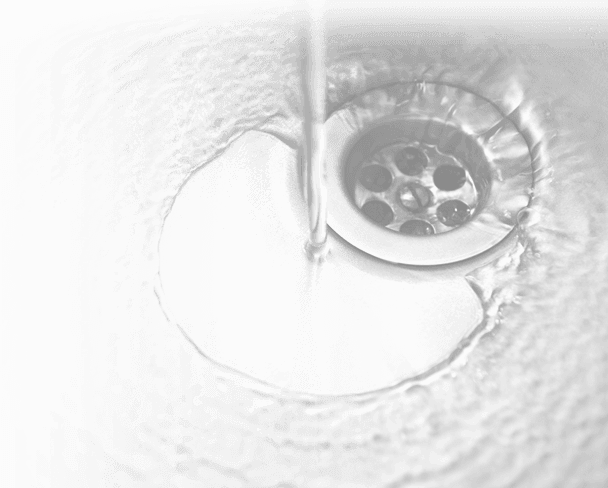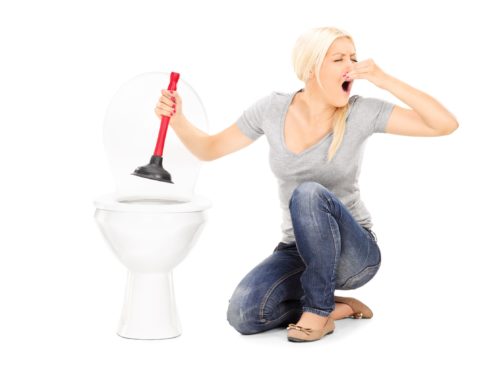8 Ways to Unclog a Toilet
We have all, at one point or another, encountered a clogged toilet in our homes. Usually, the toilet clogs occur at the worst possible time. It’s particularly frustrating when you have guests, or your home is fully occupied. When this happens, and the plunger doesn’t seem to work, don’t panic; instead, take a deep breath as there are other ways of unblocking your toilet.
You might find that you don’t need to make a trip to the store to get extra tools, as you probably have the required tools within your bathroom and kitchen cabinets. If you find yourself in this kind of predicament, turn off the water supply to prevent the toilet from overflowing and keep the below ideas in mind as you work to unblock your toilet.
1. Hot Water Clog Removal
For this hack to work, the toilet bowl should mostly be free of wastewater. Ideally, you will use heat to disintegrate the fats and oils in the waste while at the same time using the force of water to direct the clog down the drain.
You’ll need to heat about a gallon of water. You can get it from the hot water tap in your sink or tub, or you can heat the water on your stovetop. If you heat the water, however, make sure that it is not boiling to prevent it from cracking the toilet’s porcelain. Next, add a cup of hot water to the toilet and observe if the hot water will get things moving.
After adding the hot water and letting it sit for several minutes, you can try flushing again to increase the force of the water down the toilet. Then, pour the gallon of hot water directly and evenly into the bowl’s drain to cause an impact. Doing so should force the clog through and clear the toilet.
2. Soap Clog Cleaner
The soap clog cleaner works hand in hand with the hot water clog removal method. If the hot water alone fails to eliminate the clog, you can add some liquid dishwashing soap to the water. Dishwashing soaps are ideal for disintegrating grease, grime, and fat. Liquid detergent is preferable to the gel form since the gel won’t dissolve easily in cold and dirty toilet water and can potentially worsen the mess.
For an added measure, you can also add some extra soap directly into the toilet bowl and let it sit for around 20 minutes. Then, pour your gallon of hot soapy water into the bowl’s drain as directly as possible to, hopefully, dislodge the clog.
3. The Bath Bomb Method
Bath bombs are another easy fix, and they can often be found in your bathroom. These bombs are made of a combination of baking soda, citric acid, and Epsom salt. They contain chemicals that make them fizz when in contact with water; similarly, these chemicals can react to the organic waste causing the clog.
All you need to do is drop the fizzy mixture into the toilet with hot water and wait for it to work. If you have another bathroom to use in the meantime, it’s ideal to leave the toilet alone for around two hours after adding the bath bomb. Then, try flushing to see if the clog has been removed.
4. Baking Soda and Vinegar Method
It’s likely that you have baking soda and vinegar already sitting somewhere in your house. When combined, these household staples can be a great way to clear clogs in your toilet. The process includes pouring one cup of baking soda into the toilet and following it up with a cup of white vinegar. After a few minutes of wait time, pour several cups of water into the toilet bowl to dislodge the clog.
5. Bleach Clog Removal
Bleach comes in handy for much more than challenging cleaning problems. Pour several cups of bleach into the toilet, and follow it up with powdered detergent since they contain bleach and other chemicals that can break up the solids in the toilet. After waiting for around 10 minutes, simply flush the toilet to send the clog down the drain.
Of course, while handling bleach, you should be cautious to avoid staining your clothing and bathroom towels. Also, open a window as you work and remember that mixing bleach with other chemicals like ammonia can be dangerous.
6. Snake or Hanger Method
A plumber’s snake is a standard plumbing tool that is highly effective in reaching farther down the curves in the toilet drain to push the clog downwards. If the plumber’s snake isn’t within your reach, you can simply improvise and create one from a plastic-coated wire hanger.
Cut the hanger and straighten it. Then, cover one end with a small cloth and use duct tape to secure the cloth to the wire. With rubber gloves on your hands, gently push the hanger down the toilet drain, turning it to detach any debris that could be causing the clog. Be cautious to avoid losing the fabric further down the drain or potentially scratching the porcelain and opening up a flood of other problems. If the clog isn’t too far down, the hanger should be able to break it up and clear the clog. Remove the hanger and flush the toilet to see if you were successful.
7. Toilet Brush Method
If you don’t have the plumber’s snake or a hanger, you can use the toilet brush that is readily available in your bathroom. The toilet brush can be pushed into the drain hole to see if it reaches any blockage. However, this method is only effective when the clog is closer to the opening.
To create more impact down the drain, you can put the brush’s head into a plastic bag and secure the bag to the handle with tape. Then, use the brush as you would the hanger. The bag aids in forcing more water down the drain to help clear the clog.
8. Chemical Drain Cleaner
Chemical drain cleaners are readily available, and while they effectively break up the clogs, they should be used as a last result. They contain harsh chemicals that can corrode pipes and have a negative impact on the environment. Be sure that the drain cleaner you choose can be used on toilets, and carefully follow the instructions stated on the cleaner.
Simply pour the recommended amount of cleaner into the toilet and wait for the indicated time. Ensure that the lid is closed to prevent any fumes from entering the bathroom and maintain proper ventilation in the room during the process. After the chemicals have worked on the clog, flush the toilet several times to ensure that the chemicals are cleared out.
While toilet clogs can be a nuisance, it’s prudent to have the right tools when they happen. It’s recommended that you get yourself a flange plunger as it is the most effective for removing clogs in toilets, tubs, or sinks. Of course, when all else fails, it’s time to call in a professional plumber.
Ensuring the efficiency of your plumbing system requires the skills of expert companies such as Reactive Plumbing. We pride ourselves on offering lasting solutions to Hills District, North Shore, and Sydney residents. We specialize in clearing blocked drains, performing drain repair and replacement, and providing toilet repair and replacement. Contact Reactive Plumbing today to learn more about our services or to set up an appointment.
SCHEDULE WITH US TODAY
Page Form


